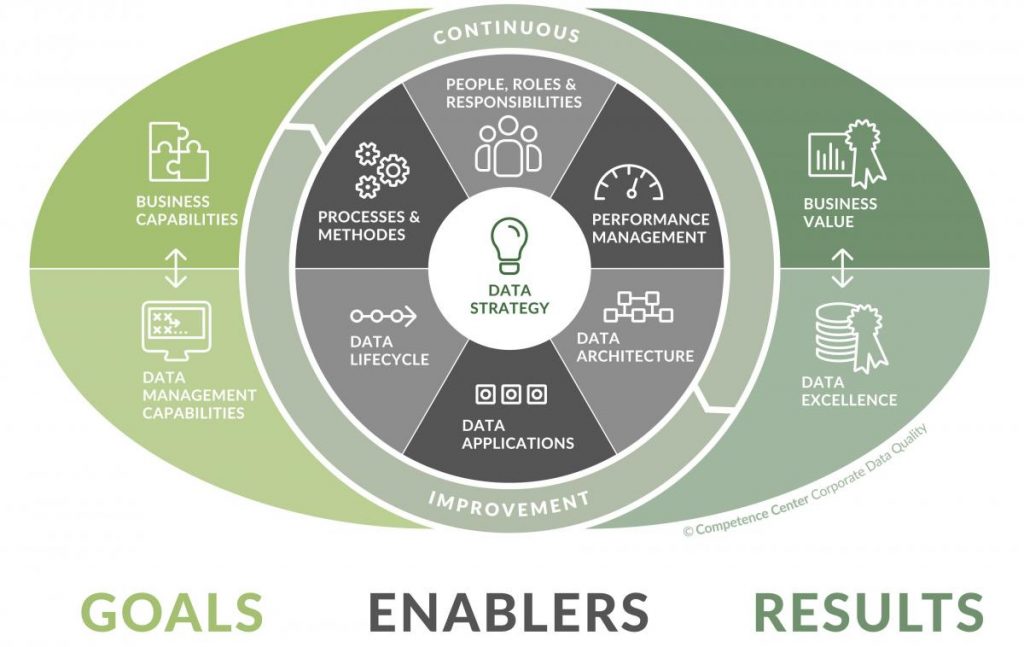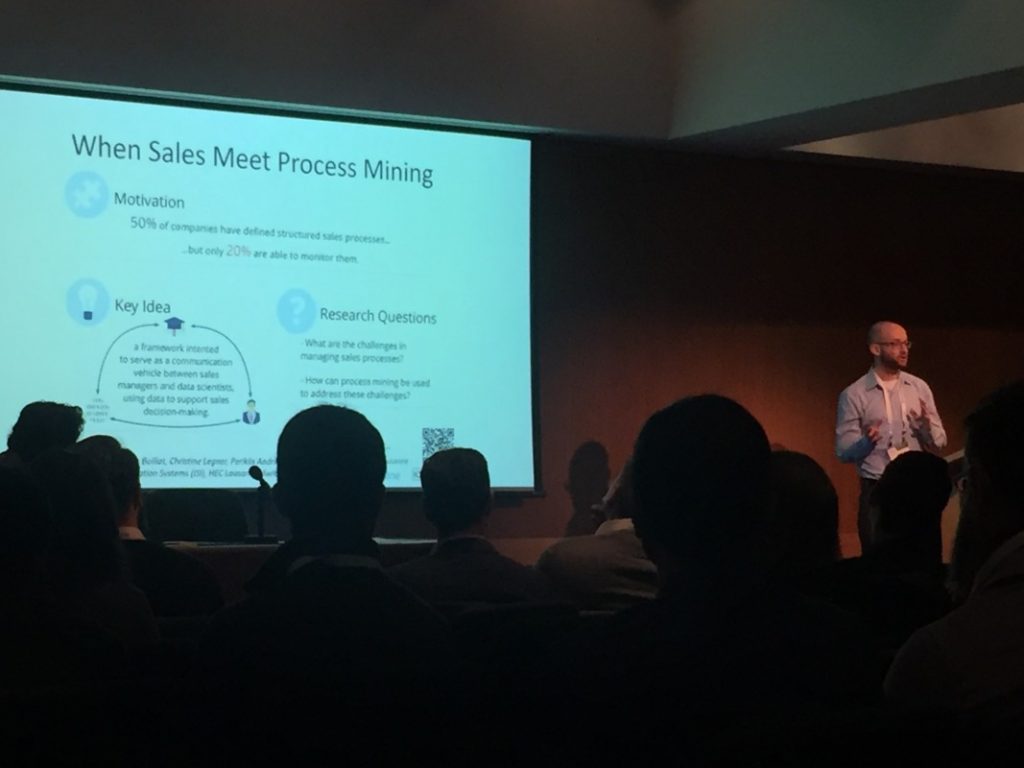In a joint effort, comprising more than 15 European companies as well as researchers from three European universities, the Competence Center Corporate Data Quality (CC CDQ) has developed a reference model for data management in the digital economy: the Data Excellence Model. It offers support and guidance for practitioners in the implementation of data management by defining major design areas, while at the same time supporting the transformation into a digital and data-driven company.
Given the understanding of data as a strategic resource for the digital economy, the reference model specifies design areas of data management in three categories: goals, enablers, and results, which are interlinked in a continuous improvement cycle.
Basically,
- goals break down the overall aim and purpose of data management by outlining necessary business capabilities and data management capabilities and explicating them in the form of a data strategy;
- enablers help to achieve the goals specified with regard to six design areas: people, roles and responsibilities; performance management; processes and methods; data architecture; data lifecycle; and data applications;
- results indicate to what extent the goals are achieved in terms of two quanti-fiable aspects: data excellence and business value; and
- continuous improvement allows adjustment of goals and enablers, ensuring the dynamic nature of the model.
More information can be found on the CC CDQ website.

